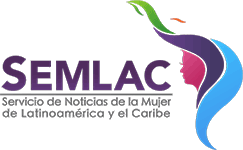What Supreme Court Breaking News Changes
You’re watching the Supreme Court reshape the balance of power in real time, especially as recent rulings tighten the president’s hand and lessen judicial checks. Big headlines—immigration enforcement, funding for controversial programs, and free speech around national symbols—signal deeper shifts beneath the surface. As these decisions ripple through policy and public trust, you might wonder just how far these changes will reach, or whose rights end up at stake next.
Impact on Presidential Authority and Judicial Oversight
The Supreme Court’s recent ruling limiting judges’ ability to issue nationwide injunctions against presidential policies has implications for the power dynamics between the executive branch and the judiciary.
This decision effectively enhances executive authority by reducing barriers that the executive branch may face when implementing national policies, particularly in contentious areas such as immigration and citizenship.
As judicial oversight is diminished, lower courts may experience a reduction in their influence, which has traditionally served as a check on presidential power.
Critics express concern that this trend may lead to an expansion of executive actions that go unchecked by the courts, thereby shifting the balance of power further toward the presidency.
The ruling underscores the executive branch's capacity to execute policies more efficiently while simultaneously limiting avenues for extensive judicial review or re-evaluation.
This development warrants careful consideration of the implications for the separation of powers and the role of the judiciary in counterbalancing presidential authority.
Shifting Immigration Enforcement Policies
The recent decision by the Supreme Court to lift restrictions on federal immigration enforcement in Los Angeles grants federal agents greater authority to conduct operations with reduced judicial oversight.
This change reflects a significant shift towards increased immigration enforcement, aligning with approaches previously implemented during the Trump administration.
The Supreme Court's ruling allows federal agents to operate with less scrutiny, which could have broader implications not only for non-citizens but also for U.S. citizens during law enforcement encounters.
Justice Sonia Sotomayor's dissent highlights concerns regarding the extent of enforcement and its potential impact on civil liberties.
The ruling represents a reinforcement of executive power in immigration matters, indicating a departure from the checks that judicial oversight typically provides.
This shift raises important questions about the balance of authority in immigration enforcement and the rights of individuals interacting with federal agents.
Foreign Aid Funding and Executive Power
The Supreme Court is currently addressing significant questions regarding the extent of executive power over foreign aid funding, particularly related to the Trump administration's decision to suspend billions in aid.
This case will provide important legal clarification about the balance of power between the presidency and Congress regarding foreign policy expenditures.
Historically, the judiciary has complicated executive attempts to unilaterally control foreign aid, as there are established legal frameworks that typically require congressional authorization for such funding.
However, recent trends observed in Supreme Court rulings suggest a potential shift towards broader interpretations of executive authority.
The outcome of this case may have implications for future foreign aid policies and the ongoing debate concerning the constitutional division of financial powers between branches of government.
Free Speech Challenges and National Symbols
The First Amendment of the United States Constitution provides strong protections for free speech; however, recent executive actions have triggered renewed discussions regarding its boundaries, particularly in connection with national symbols like the American flag.
In 2020, President Trump's executive order sought to challenge the Supreme Court's 1989 decision that affirmed the constitutionality of flag burning as a form of protected speech. This development raises important questions about the interaction between free speech rights and the status of national symbols.
If the matter is revisited by the Supreme Court, it could lead to further examination of whether the preservation of national symbols justifies limitations on speech. This ongoing debate highlights the complexities involved in balancing civil rights with the need for a cohesive national identity represented by these symbols.
Advocates for protecting the flag argue that it embodies national unity and respect, while free speech proponents contend that expression, even if controversial, is fundamental in a democratic society.
As discussions unfold, it's crucial to consider the historical context of these legal precedents and the implications of redefining the scope of free speech in relation to national icons.
Changes to Research Funding and DEI Initiatives
The Supreme Court's decision to uphold the Trump administration's $783 million reduction in federal research funding represents a significant shift in the funding landscape for academic research.
This decision has sparked a considerable debate regarding its implications for diversity, equity, and inclusion (DEI) initiatives within research programs.
The ruling has raised concerns among academics about the potential decline in funding for programs that foster diversity and support underrepresented groups in research fields.
Critics argue that a reduction in financial support for DEI initiatives may lead to a decrease in diverse voices within academia, which could subsequently hinder the progress of inclusive practices in various disciplines.
Institutions that rely heavily on federal grants may experience new challenges as they adjust to these changes in federal funding priorities.
This could include having to find alternative funding sources or reevaluating how they allocate existing resources to maintain support for DEI initiatives.
As policies and priorities evolve, institutions may need to develop strategic approaches to navigate the complexities of funding in this new environment.
Social Media Regulation and Age Verification Laws
The recent Supreme Court decision allowing Mississippi to enforce age verification on social media platforms indicates a significant development in the regulation of online spaces for children. This move aims to enhance child safety by restricting access to social media for those who don't meet age requirements.
However, the implementation of such age verification processes raises important concerns regarding user privacy and data security. Critics, including organizations like NetChoice, argue that mandatory age verification could compromise users' personal information and affect digital privacy. The concerns revolve around how this sensitive data will be collected, stored, and potentially shared, raising questions about user consent and the adequacy of protections in place.
This ruling reflects an increasing trend of state involvement in digital regulation, suggesting that the framework for how social media is accessed and utilized may undergo notable changes.
As legislation continues to evolve, it will be crucial to assess both the intended benefits for child safety and the implications for users' rights to privacy and freedom of expression online.
Redistricting, Voting Rights, and Minority Representation
The Supreme Court's decision to hear the challenge to Louisiana's congressional map has rekindled discussions about representation for minority communities, particularly regarding the implications for voting rights and minority representation.
Central to the arguments in this case is whether the creation of a second majority-Black congressional district in Louisiana aligns with constitutional requirements and effectively safeguards the interests of historically marginalized voters.
This case has broader implications beyond Louisiana, as the Court's ruling could establish significant precedents for how redistricting efforts are approached nationwide.
The legal considerations will determine not only the fate of Louisiana's congressional map but also inform future practices regarding minority representation in other jurisdictions.
Observers note that the outcome of this case may influence the balance between ensuring fair representation for minorities and adhering to constitutional principles during the redistricting process.
Court Security, Executive Precedents, and Public Perception
Concerns regarding the safety of Supreme Court justices have escalated in recent years, leading to proposed legislation that would allocate funding exclusively for the security of the nation’s highest court.
This proposal reflects broader political tensions surrounding judicial independence and the priorities assigned to different branches of government. The discussion surrounding court security transcends mere physical protection and raises questions about the prioritization of various judicial roles within the larger institutional framework.
Additionally, the Supreme Court's recent decisions have influenced executive precedents, particularly in the realm of immigration policy.
This shift has provided the executive branch with enhanced authority to implement its policies, which in turn has implications for the balance of power among the branches of government. As the Supreme Court continues to issue rulings on contentious issues, public perception of the Court is likely to evolve.
These developments contribute to ongoing debates about the Court’s fairness, independence, and its role in a system of checks and balances.
Conclusion
You’re witnessing a pivotal moment as recent Supreme Court rulings shift the balance between presidential authority and judicial oversight. These changes affect everything from immigration and foreign aid to free speech and voting rights. As the Court limits nationwide injunctions and expands executive power, you’ll want to stay alert to how this impacts civil liberties and public trust. Ultimately, your engagement and understanding will shape the ongoing debates about fairness, independence, and the future of American governance.


